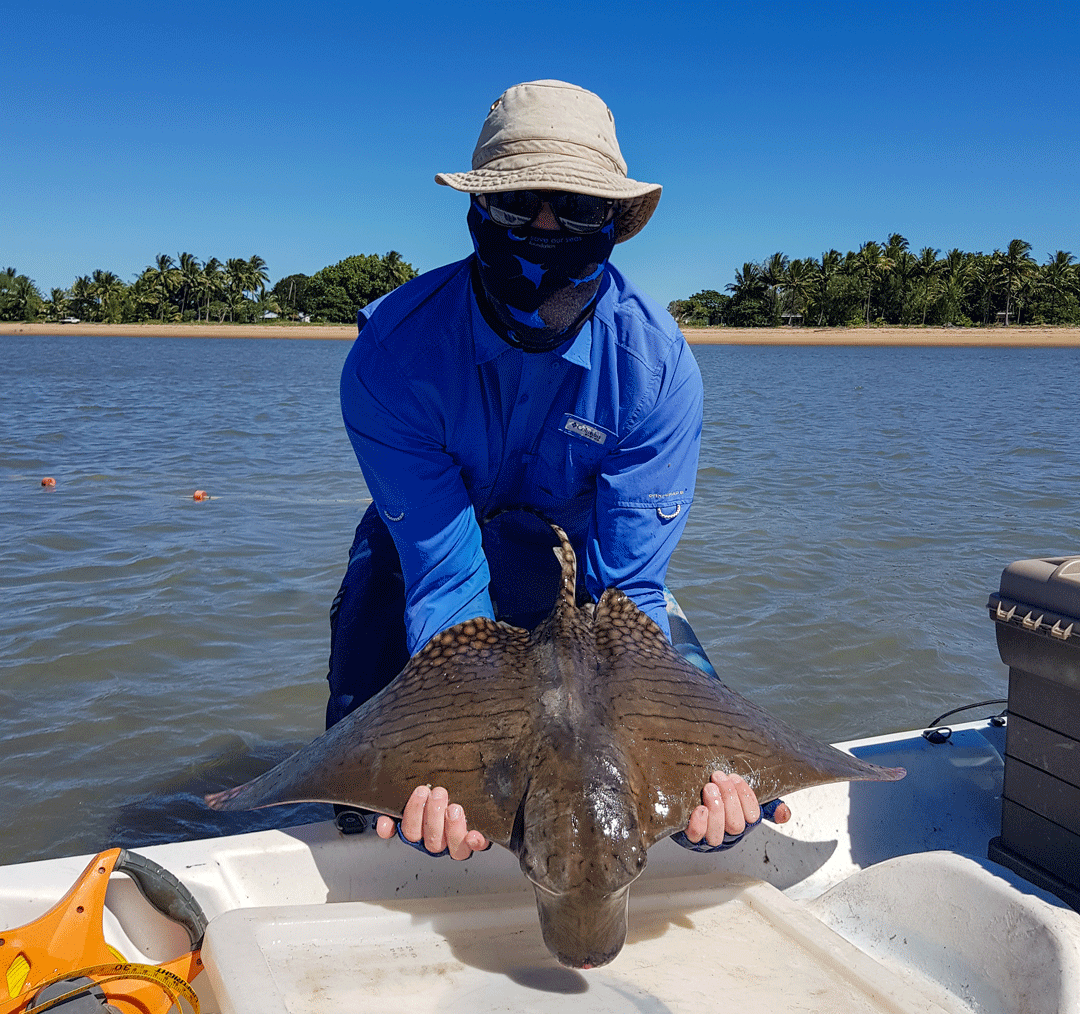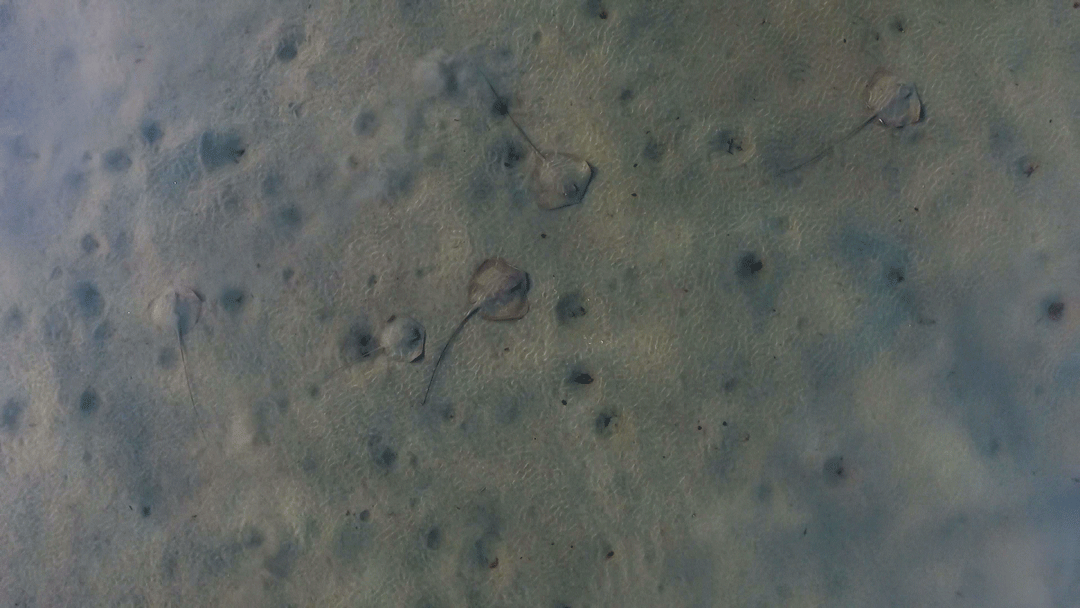Confessions of a stingray stalker
As a kid, you were probably taught that spying on other people is wrong. Despite the warnings, I’m sure many of you have, at some point in your life, spied on a friend, neighbour, or complete stranger. Sometimes we just can’t help it. You see someone doing something odd and you keep watching until you figure out what or why they are doing it. It is amazing how much information we can obtain by watching individual subjects for even a short period of time. As someone interested in the behaviour of stingrays, it seemed logical to become a stingray stalker.

Sunrise at Lucinda, Queensland. Photo © Kevin Crook.
So how does one stalk a stingray? Well, my days start early. At three o’clock in the morning, I’m getting out of bed, grabbing a quick breakfast, and loading my spy gear into the car. At 3:30, I’m on the road belting out my favourite tunes and guzzling coffee to sharpen my senses for the mission ahead. At 5 am, I arrive at my destination and don my spy outfit: boots, long pants, long sleeves, gloves, face mask, hat, and sunglasses. As I walk out onto the beach just as the sun begins to peek above the horizon, it occurs to me that I probably look a bit suspicious. Luckily I have the beach to myself.

Kevin Crook hiding from the sun in full spy gear with an ornate eagle ray. Photo © Melanie Fyda
Alone at the beach, it’s time to unleash my secret weapon: my spy drone. Stingrays are ideal subjects for monitoring using drones. Their preference for shallow water allows observation even when swimming along the bottom, their flattened shape makes them easy to identify from above, and their conspicuous foraging behaviour makes it easy to identify when they are feeding.

Screenshot of Australian whiprays foraging during a drone track. Photo © Kevin Crook
With a few beeps and a couple of revs of the propellers, the drone is off and rapidly ascending out over the sandflat. My eyes are glued to the live video feed, scanning back and forth across the screen looking for anything resembling a stingray. After only a minute of scanning the sandflat, I have located my target. Slowly, I bring the drone down and hover 2-3 meters above the stingray. The day’s stalking has begun.
Sample of a drone track of an Australian whipray. Feeding behaviour can be seen at 19 seconds. Video © Kevin Crook
The battery life of the drone allows me to follow a focal stingray for up to 23 minutes. Despite the brief observation period, drone tracks are providing information on how far stingrays are moving, how they are feeding, how many times they are feeding, how they interact with other individuals and even information on feeding pit size and ray size (detailed in my previous blog post). These types of observations have led to novel insights about the ecological roles of stingrays in sandflat ecosystems and how co-occurring species may be partitioning resources on a fine scale.
Beep, beep, beep, beep. The drone has hit the low battery warning and it is time to end the track and bring the drone back to land. Mission complete. With one flight finished, time to swap out the battery and do it all over again with a different stingray. One down, six to go…
